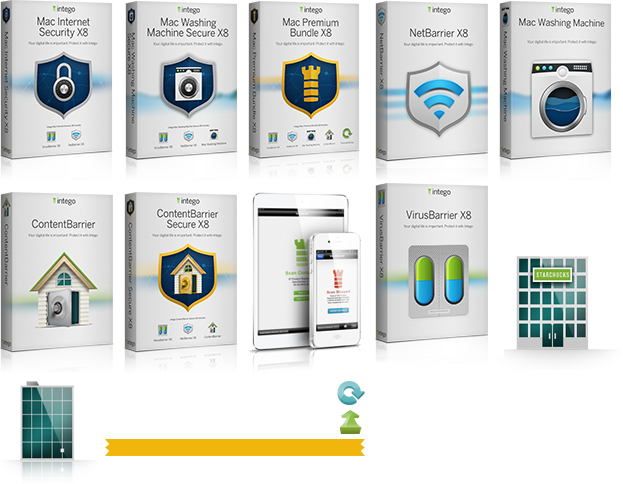Do Macs Need Antivirus?

How often do you use the airbags in your car? We’re guessing (and hoping) the answer is: not often, almost never. Airbags only deploy in an accident, but they’re on the ready every single time you get into your car. That’s how we think of antivirus software for your Mac – you don’t need it, right up until that instant that you desperately do need it.
Every time you decide to cruise around the Internet (we promise that’s as far as we’ll take the car metaphor) you expose your Mac to a variety of threats. With Intego antivirus protection, you have the peace of mind that your Mac will be protected from anything you may encounter.
So you may be thinking: Macs don’t get viruses, so what am I protecting myself from? Well, it’s certainly a common question. The conventional wisdom among many Mac owners is that they simply don’t need antivirus software. This line of thinking is usually supported by one of two arguments: Macs are such a small percentage of the overall computer market that cyber-criminals don’t mess with them, or Mac OS X is impervious to malicious software. We’ll address each of these arguments in turn.
First off though, let’s talk semantics. While much of the mainstream media still refers to anything that negatively affects your computer as a “virus”, the proper catchall term for malicious software is: malware. A virus is just one type of malware, and while it’s true that Mac viruses are extremely rare, other types of Mac malware are becoming increasingly common. So while the conventional wisdom may technically be correct, you do need to protect yourself from Mac malware.
Mac malware has actually been around for quite a while. It dates all the way back to the 1980s when viruses were spread by the shared use of floppy disks. Seems almost quaint, doesn’t it? Malware writers continued to evolve and developed a worm called AutoStart 9805 in 1998 that spread from Asia to the rest of the world. In 2006, Leap-A became the first malware to infect Mac OS X and used the iChat instant messaging system to spread. Other worms and Trojans were deployed over the years, but with a small number of Macs affected relative to the overall computer population, they didn’t make big news outside of the tech blogs.
Which leads us to the first argument Mac owners make against antivirus software. Macs do indeed represent a minority share of the desktop and laptop market. According to Gartner, the Mac market share in the United States in 2011 was just 11%, while it was estimated to be only 5% or lower globally. For years, Mac owners have clung to this false sense of security, assuming that they were too small of a piece of the pie for cyber criminals to go after. We should point out that this argument doesn’t claim that Macs are impenetrable, only that the likelihood of an attack was low because they weren’t worthy targets for one. Whether this was ever true is debatable, but it’s clearly not true now.
Mac malware began to increase dramatically in 2011. The MacDefender attacks used a fake antivirus offer to lure Mac users into providing their credit card numbers. The disguise and style of the attack evolved over time, showing an increased sophistication by the cyber-criminals. These malware developers are using techniques they’ve been honing on Windows users for years in order to quickly evolve Mac malware.
This year hasn’t been any better, with the number of malware attacks continuing to rise. The Flashback malware alone has infected over 600,000 Macs as of this writing. And what’s most striking about this particular attack is how nimble the malware appears to be. Initially it posed as a Flash installer (hence the name) and entered Macs as a Trojan horse. It has since changed in character and installs itself with a drive-by download if you even visit a poisoned web page. Cyber-criminals are putting significant time and effort into targeting Mac owners.
The second argument against antivirus for Mac hinges on Mac OS X being impervious. Mac OS X certainly has had fewer malware attacks than Windows over the years. However, as we mentioned earlier, there really is no such thing as a computer that’s not at risk – unless you vow to never connect to the Internet with it.
While Apple does issue security updates to stop known malware, there’s often a significant lag time between a malware attack and when they release a fix. And because the perceived impenetrability of Mac OS X is a key marketing component, Apple is rarely transparent about the risks Mac owners face or the ways they can protect themselves.
We should also mention that in order to take full advantage of the security fixes Apple provides, you must run the software updates diligently. A surprising number of Mac owners, and computer owners in general, simply don’t do that.
So does your Mac need antivirus and anti-malware protection? Obviously it’s a decision you’ll have to make for yourself. However, the threats to your Mac are real and increasing. To always stay a step ahead, give VirusBarrier X6 a try for free.
